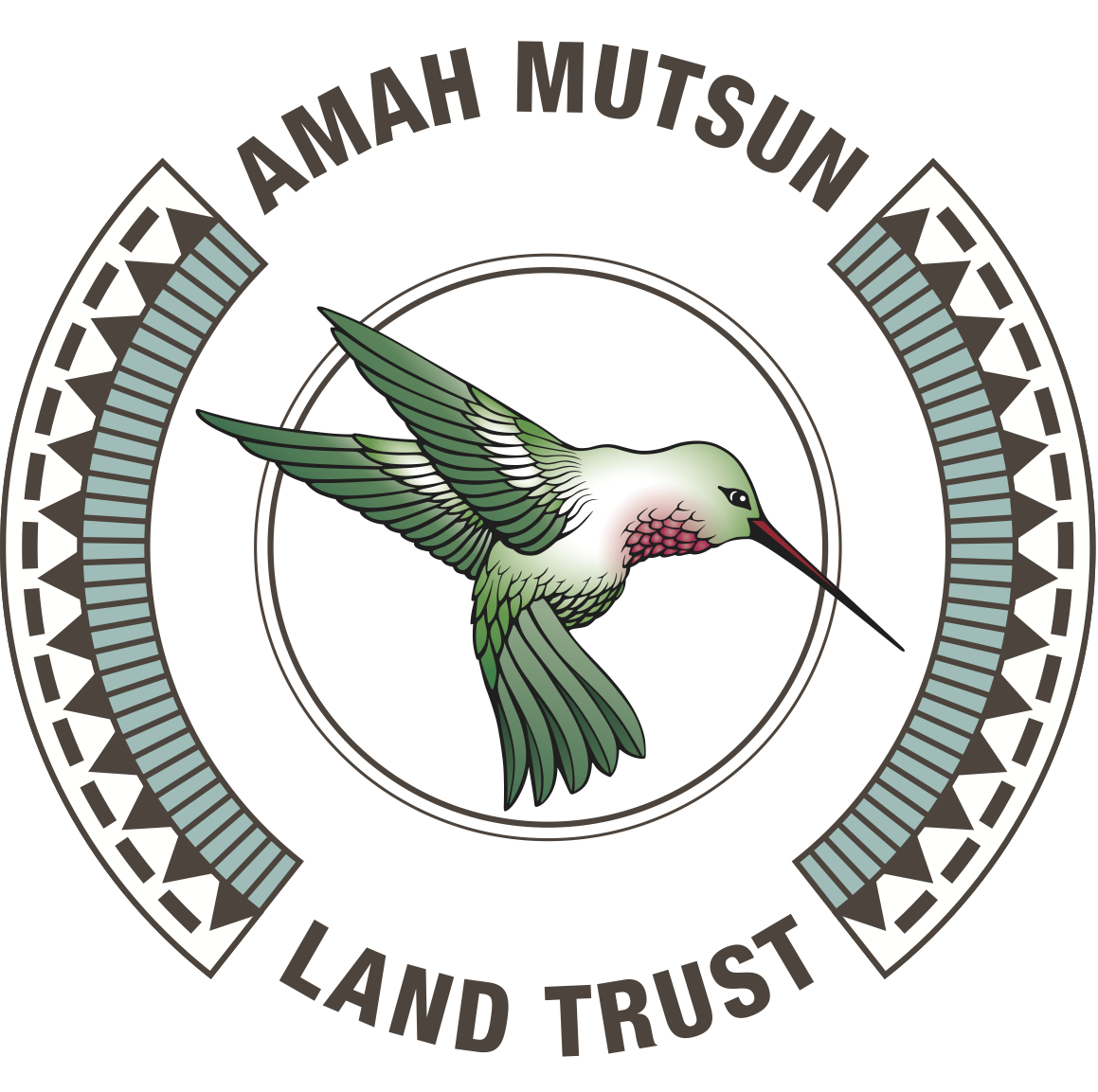Spring 2025 Newsletter
To return to the newsletter, click here.
Notes from the Native Stewardship Corps: Reflections from the Tribal Land Return Conference
By Jacob Girouard, AMLT Program Intern and Tribal Member
On March 4th-6th, Alexii and I were able to attend the Tribal Land Return Conference in LA hosted by the Decolonizing Wealth Project! It was a 3-day event where we were able to connect with at least 9 other California Tribes and their representatives, as well as the nonprofit Decolonizing Wealth. We had a lot of deep meaningful conversations with folks in the community who are working through similar situations in their tribes and their businesses.
Jacob and Alexii Sigona, AMLT Lands Acquisition Specialist and Tribal member, at the DWP Conference in March 2025.
On the 1st day, we arrived in LA at the Line hotel and had dinner with our fellow attendees. We had Oaxacan food and were able to connect with folks in a more casual sense. The 2nd day, we got down to business and attended an 8 hour day full of presentations and formal introductions. We heard a little background from each tribe but had more of an in-depth presentation with the Paiute Reservation and how their land acquisition efforts have been enriching their culture and community. It was interesting to hear about the differences in struggles between Federally recognized tribes and non federally recognized tribes or tribal non-profits. On the 3rd day, we had a site visit in San Fernando hosted by the Tataviam Land Conservancy.
The Fernandeño Tataviam Band of Mission Indians has occupied the geographical area of Northern Los Angeles County and maintained a highly complex and extensive network of relations between lineages since time immemorial. In 1797, the Spanish established Mission San Fernando Rey and for the years following, enslaved ancestors from the villages in Simi, San Fernando, Santa Clarita, and Antelope Valleys, who became known as Fernandeno. They have a similar story to the Amah Mutsun in the sense they face some of the same struggles we face due to the missionization and enslavement of our people. The Tataviam are navigating the American period through their Non-profit organization, the Tataviam Land Conservancy, which they established in 2018 to acquire, safeguard, and return their ancestral landscapes.
Tribal Land Return conference attendees join for a site visit hosted by the Tataviam Land Conservancy.
During the site visit we were led by one of the Tataviam’s allies who was showing us around a park that allows the Tataviam to steward it. They had a garden that walked folks through their history. Certain sections were dedicated to native plants and the period before colonization. Other sections were dedicated to the mission period and featured an actual adobe wall that was excavated from the Mission and brought to the park, as well as invasive olive trees. It was unclear if the tribe had plans to remove the olive trees. The Tataviam has access to hold ceremony on this small plot of land as well. They had a pit where they held sweats and had an area for dancing. Towards the end of our visit, we had the honor of speaking with their Chairman Rudy Ortega Jr. Chairman Ortega was able to give more context to us regarding the overall history of the Tataviam and their current successes. Recently they started the first tribally led conservation corps in Los Angeles. Established in 2022, the Tiuvac’a’ai Tribal Conversation Corps (TTCC) mission is to develop a workforce program for 18-26 year olds to become trained for outdoor careers while receiving paid stipends. Overall, it was very powerful and educational to connect with all of these folks. I believe Alexii and I walked away with plenty of resources to reach out to in order to better our land acquisition efforts and community.
To learn more about the Fernandeño Tataviam Band of Mission Indians, click here.
To learn more about the Tataviam Land Conservancy, click here.


